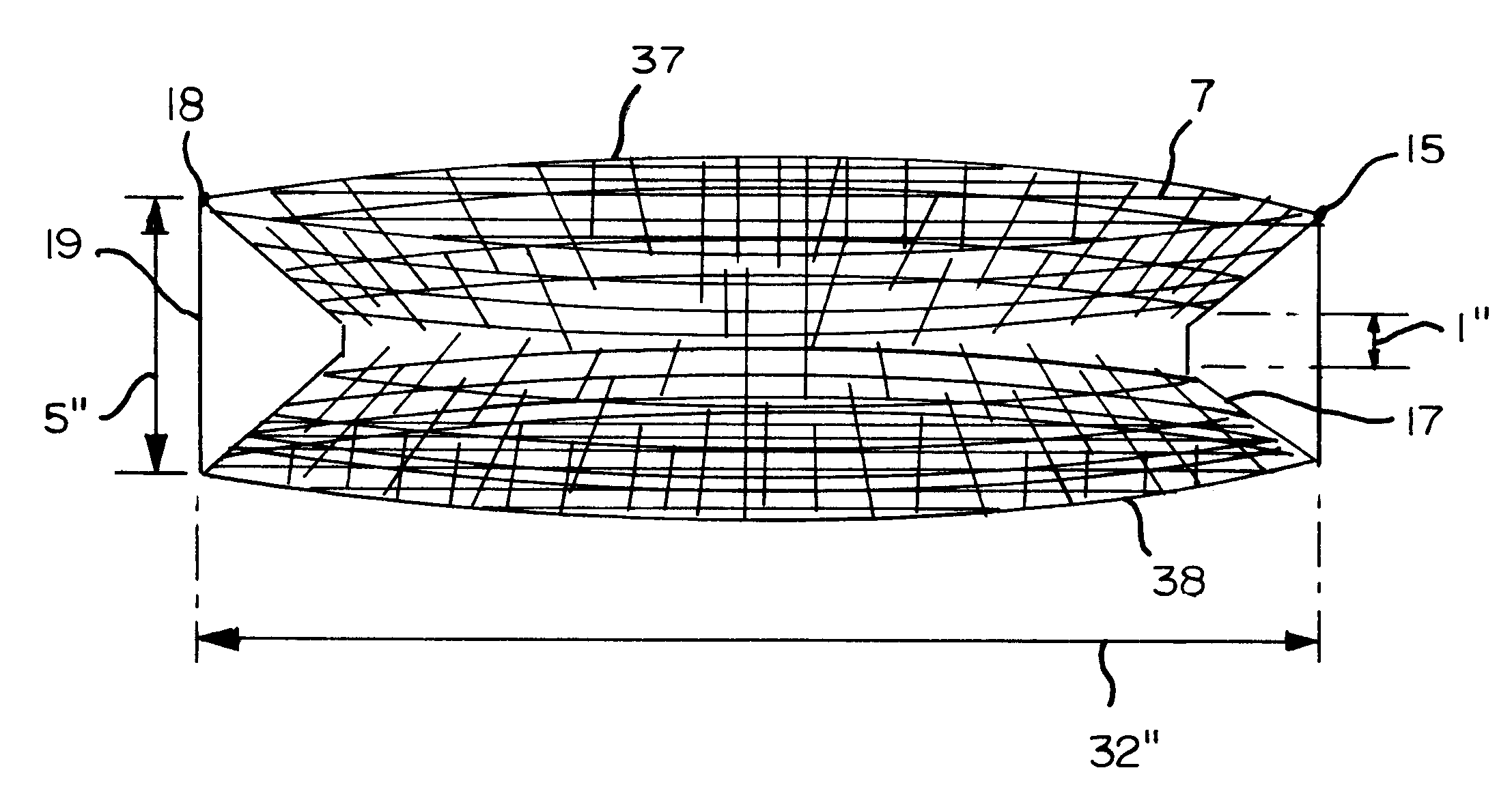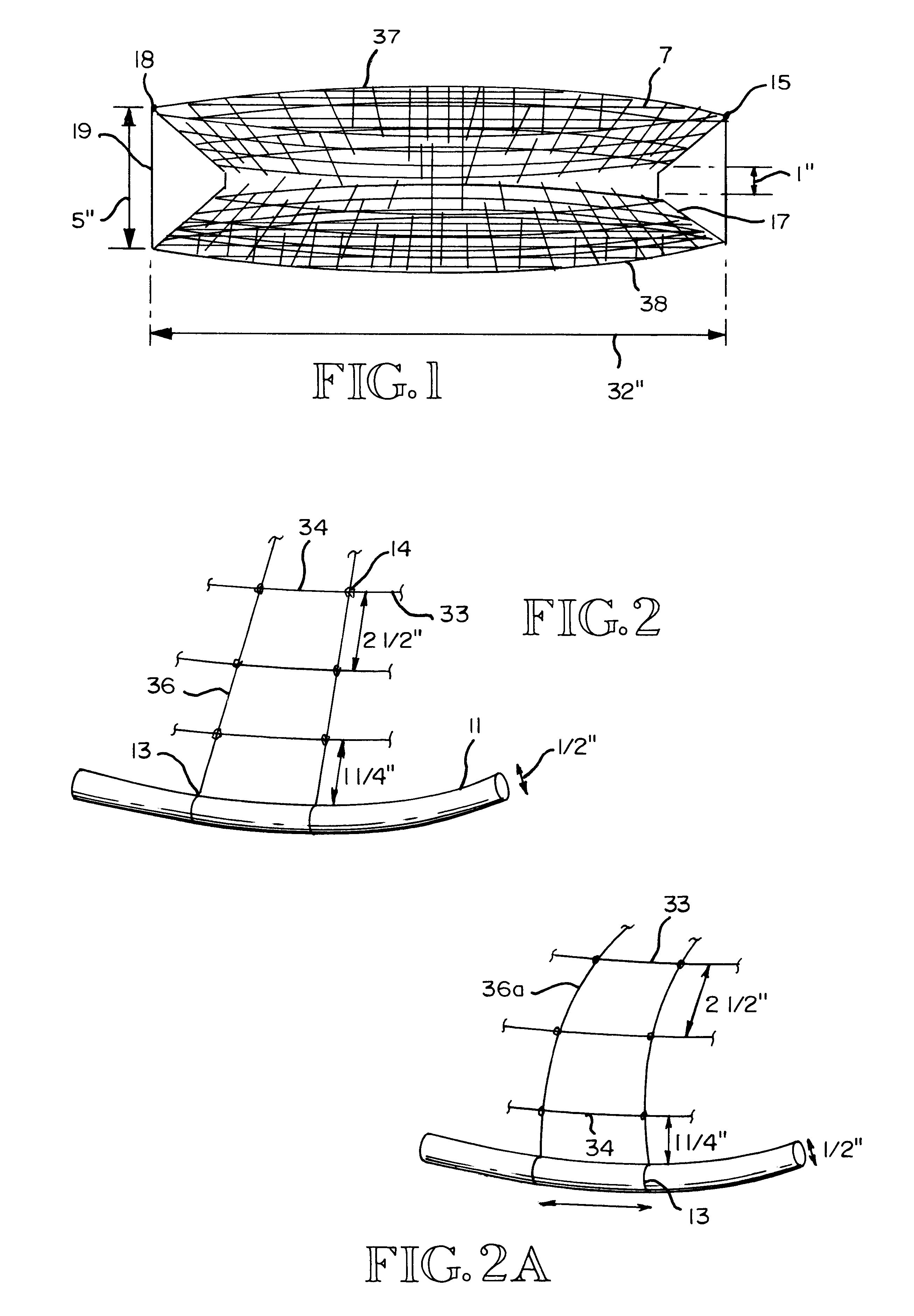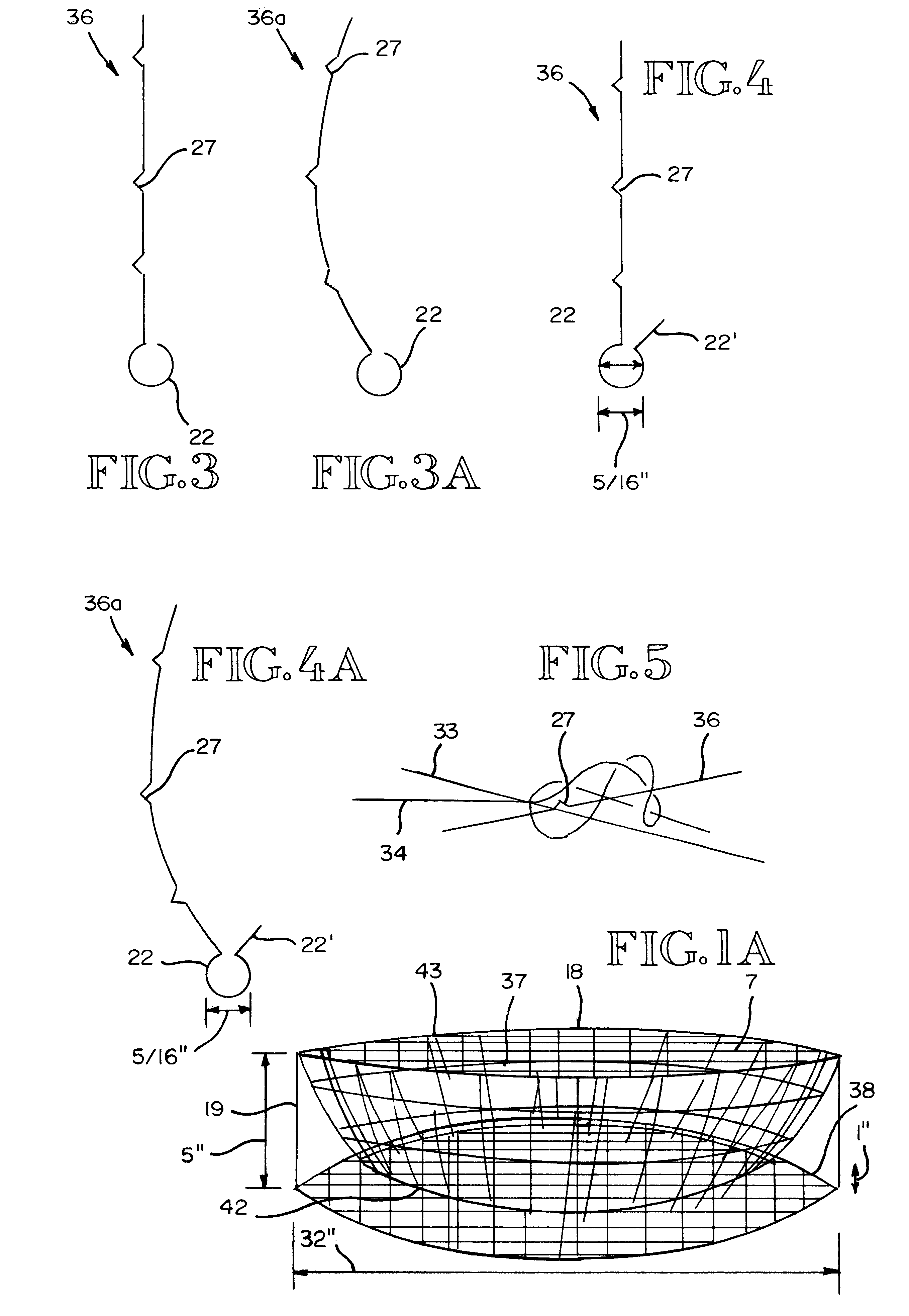Spring door crab pot
a crab pot and spring door technology, applied in the field of spring door crab pots, can solve the problems of not being able to adapt to the size, weight and material of crabs, and not being able to accommodate both commercial and individual crabbers,
- Summary
- Abstract
- Description
- Claims
- Application Information
AI Technical Summary
Benefits of technology
Problems solved by technology
Method used
Image
Examples
Embodiment Construction
A typical embodiment of the spring door crab pot invention is illustrated in FIG. 1 (side view). The spring door of the illustrated crab pot is one of two design variations. The frame of FIG. 1 remains the same, consisting of a round top member 18 and a round bottom member 38 held parallel by four support posts 19. The posts 19 are perpendicular to the top and bottom members 18, 38 of the frame 11 and parallel to one another. The top and bottom of the frame are comprised of nets 17 made from a choice of wire materials, such as stainless steel, copper, brass, zinc or other such metals of a non-corrosive, anti-rust nature.
The spring door 15 occupying the height and the circumference of the crab pot is comprised of a series of elongated members made up of spring steel rods 36, extending from the frame top member 18 and bottom member 38 and connected to one another by spring steel wire 33 and a thin plastic medium 34, that can be fishing line. The spring door illustrated in FIG. 1 is th...
PUM
 Login to View More
Login to View More Abstract
Description
Claims
Application Information
 Login to View More
Login to View More - R&D
- Intellectual Property
- Life Sciences
- Materials
- Tech Scout
- Unparalleled Data Quality
- Higher Quality Content
- 60% Fewer Hallucinations
Browse by: Latest US Patents, China's latest patents, Technical Efficacy Thesaurus, Application Domain, Technology Topic, Popular Technical Reports.
© 2025 PatSnap. All rights reserved.Legal|Privacy policy|Modern Slavery Act Transparency Statement|Sitemap|About US| Contact US: help@patsnap.com



